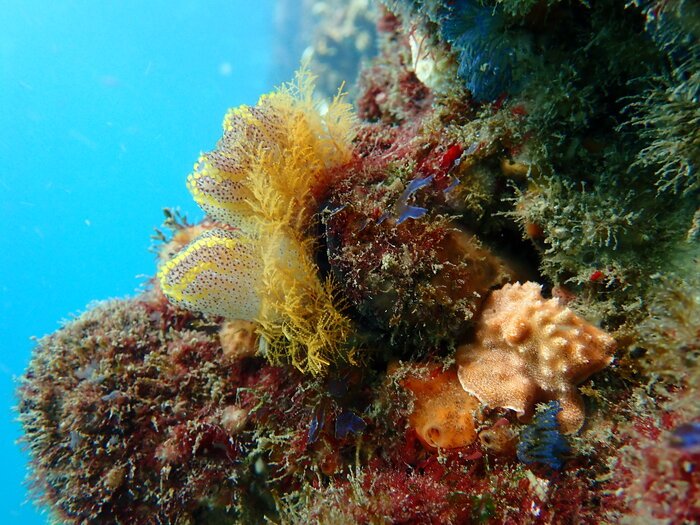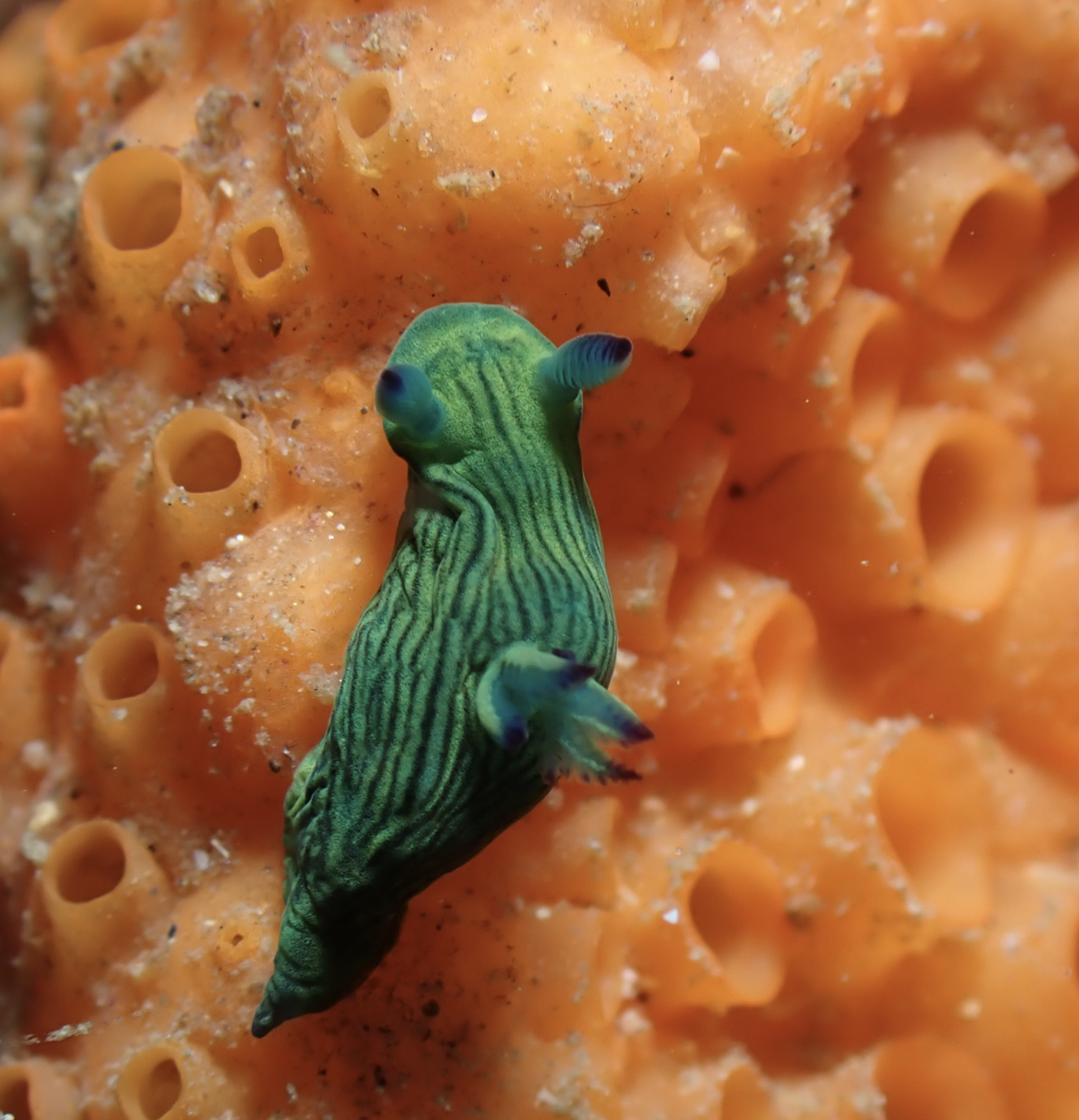Life Under the wharf
Tathra Wharf monitoring project
Last year for Science Week, Minka Waratah, (Bega High captain and Bournda EEC Future Leaders Environment Award winner for 2021), made an amazing short video of her favourite snorkeling site - Tathra Wharf, for National Science Week in 2020 that has since had over 40,000 views!
Minka’s fascination with the Wharf and its denizens hasn’t waned since then, so when she heard the Wharf pilings were going to be restored, she was alarmed that the teeming creatures of the Wharf would lose their homes and we would lose some of the best biodiversity in the area.
She got interested people together including her dad, Luke Hamilton, and with the assistance of Wally, the Sapphire Coast Learning Community of Public Schools (SCLC) submersible drone and Bournda EEC teacher Luke Brown she presented a session at this year’s Science Week all about the Wharf and it’s restoration, with a group of people including David Buckley (Project Manager – BVSC), Jayde Rankin and Will (Eden Dive), Libby Hepburn (Atlas of Life) , Luke Brown (BEEC), Wally couldn’ make it but sent some video.
The outcome of this has been that we have agreed , with scientific advice from Prof David Booth(UTS), to set up a monitoring project of the Wharf and record as much of the life on its pilings as we can before any work is carried out, we will also work with BVSC and advisers to ensure that as much of the marine life as possible is saved and special creatures like the seahorses are re-located to other pilings that wre going to remain in place.
We are developing a plan for monitoring, restoration and rehabilitation with citizen scientists providing the volunteer survey time. records will be added to the Atlas of Life database iNaturalist and updates on the approach and findings will be shared here.
Minka’s story:
I first begun diving and exploring beneath the Tathra Wharf when I was perhaps fifteen. I remember my surprise upon discovering how incredibly beautiful and alien the world was just a few metres beneath the surface and practically in my own backyard. On just one breath you can swim the length of the wharf structure, yet I’ve spent countless hours watching and wondering at the endless hidden mysteries of this unique ecosystem. Immersed in the blue shadows and sparkling curtains of light that stream between gaps in the old timber decking, it’s possible to forget that a place which seems so timeless and far-removed from every-day life can be directly and drastically altered by human actions but that is the difficult truth.
The wooden pylons and concrete bases which support the wharf structure have over time become home to thousands of marine organisms and now form a kind of underwater forest. Each pylon has been colonised by an amazing array of marine plant and animal forms from tiny star shaped white and red anemones, sea sponges, soft corals, cunjevoi, sea tulips, and seaweeds, to nudibranchs, starfish, crabs, octopus, and seahorse. Amongst the pylons shelter many species of resident and shoaling fish as well as massive stingrays and the occasional seal or rare penguin visitor.
Unfortunately, weathering and organic processes have contributed to the decay of some of these pylons making them no-longer structurally sound and prompting the need for renovation to preserve the historic wharf.
When I became aware of the planned removal and replacement of pylons I was greatly concerned for the preservation of the unique ecosystem in the face of construction works. I immediately contacted friends and local community members and together we have formed this group to ensure the minimisation of damage and prioritisation of environmentally appropriate materials in the redevelopment of the wharf to maximise maintaining the natural intrinsic value. Our discussions have already had positive impacts in the Council planning and further to this, are leading to an emerging scientific case study of the success of environmental protection methods, species present and into the future and the resilience of this unique and beautiful ecosystem. Community members will be undertaking the monitoring of the Wharf.
Minka Waratah




